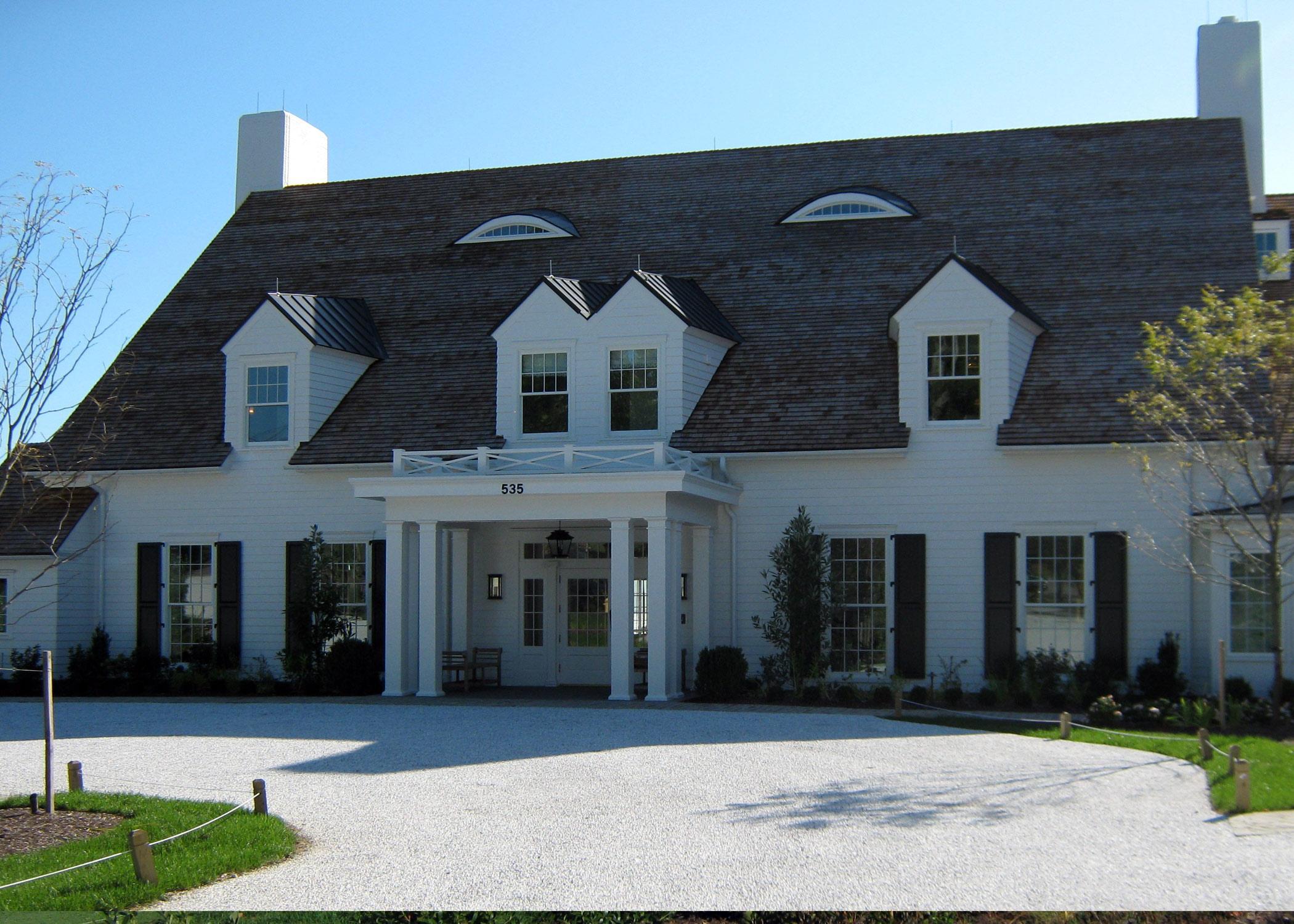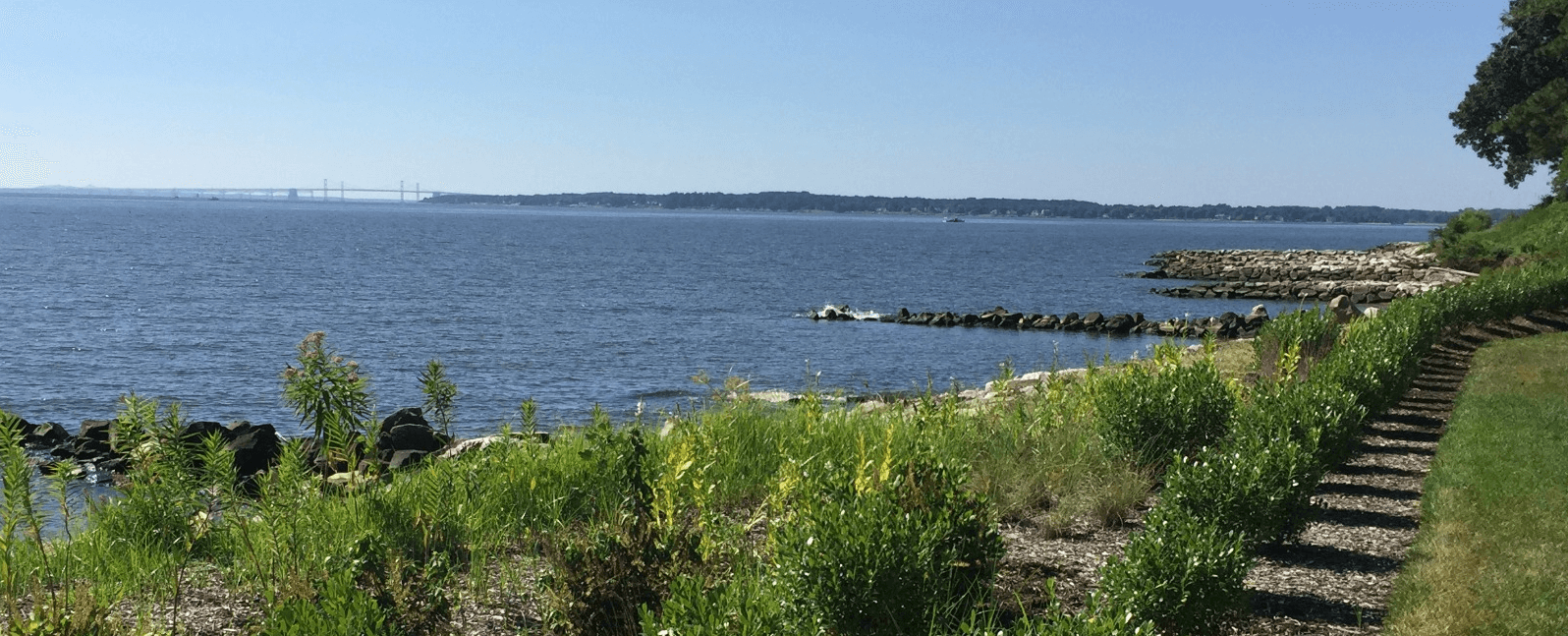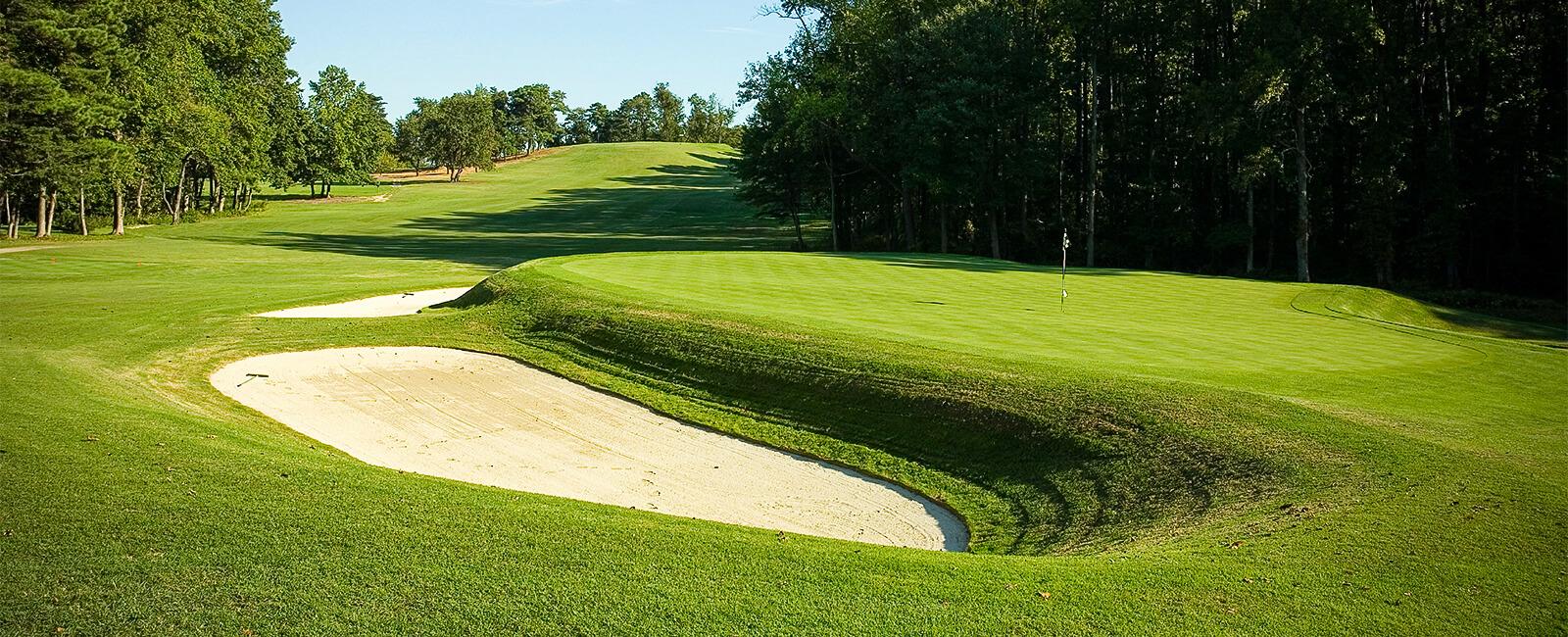Our History
Gibson Island was purchased in 1921
HISTORY
Gibson Island was purchased in 1921 by Stuart Symington for development as a private summer community where members could enjoy summer activities such as golf, sailing, swimming, and tennis. The club's initial members were mostly prominent businessmen, socialites and politicos from the Baltimore area, although members hailed from Wilmington, Philadelphia, New York, Boston and other cities. During the 1920's, Gibson Island was touted as "the Newport of the South" and continues to maintain an image of wealth and sophistication.
The private membership community is laid out according to the formal plan designed in 1922 by the acclaimed Olmsted Brothers of Brookline, Massachusetts. This layout emphasizes the island's natural topography and incorporates native flora. Roads are de-emphasized and take the form of paved, meandering pathways. The original plan was designed to accommodate 423 residential lots and two 18-hole golf courses. This scope of development was never achieved; the community features approximately 190 private dwellings and one 9-hole golf course. Gibson Island's present landscape remains true to its constructed form and is an excellent example of a 20th early-century planned recreational community.
Gibson Island is also important for its fine collection of early-20th century architecture. The up-scale dwellings principally reflect the varied taste of wealthy Americans in the first half of the 20th century. The Olmsted Brothers responsibility was to design the landscape, but they also had ideas about the architecture and called for separation of areas done in different styles so that an incongruous mixture of styles will not dilute the intended effect of each. Gibson Island house styles include the French and Spanish Eclectic, Colonial, Gothic and Tudor Revivals; and Mission and Art Deco tastes.
War II era houses include American International, Neoeclectic, Ranch, Split Level, and Venturi-inspired buildings. In addition, three 19th century vernacular farm houses predate the formal development of Gibson Island, all of which have been altered.
Gibson Island is characterized by its stylish and relatively sizable dwellings, but small, modest dwellings that include a number of Cape Cod houses and bungalows are present. The cluster of small houses near Red House Cove are owned by the Gibson Island Corporation and were built as employee housing.
Gibson Island is an outstanding example of an early-20th century, designed, recreational community and is organized according to the plan created by the Olmsted Brothers of Brookline, Massachusetts. The Olmstead Brothers are recognized as the period's preeminent landscape architecture firm, and the brother's father, Frederick Law Olmsted, is considered the father of the profession. Notable Olmsted projects include New York's Central Park, Stanford University, and the 1906 redesign of Washington D.C. Gibson Island is one of three Olmsted Brothers-designed communities in Anne Arundel County; the other two being Annapolis Roads and the Wardour section of West Annapolis. Gibson Island far exceeds the others in both size, quality of design and retention of historic integrity.
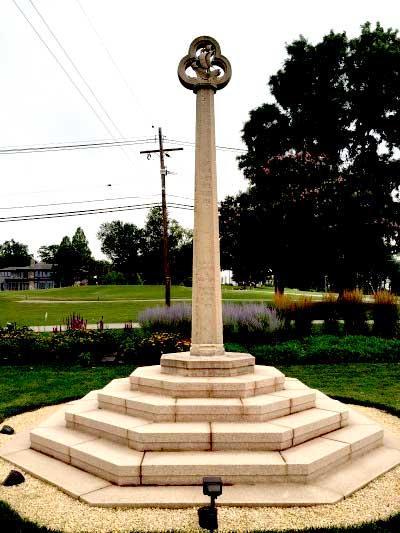
The Olmsted plan provides a showcase for the Island's approximately 190 private residences. A number of these are designs of important Baltimore and east coast architects. Architectural firms involved with early Gibson Island homes and public buildings include: Parker, Thomas & Rice; Palmer, Willis & Lamdin; Laurence Hall Fowler; Buckler & Fenhagen; Edward Palmer, Jr.; Harold Holmes Wrenn; R.E.L. Taylor D.K. Este Fisher; Addison Worthington; Bryden Hyde, A. B. Trowbridge.
The Gibson Island development was the idea of Baltimore judge and businessman Stuart Symington. Tradition recalls Symington's principal motivation for developing a private summer community was his displeasure over the quality of and the long delays at Baltimore area golf courses.
Apparently, others shared the same frustration and Symington soon persuaded approximately forty-five friends and colleagues to join him in creating a new club. In 1921, after a year of inquiry, Symington purchased Gibson Island for $165,000. Here Symington was inspired to create what he called "a club within reasonable distance of the city, where attractive people of moderate means could enjoy summer events such as yachting, bathing, golf and tennis." The Gibson Island enterprise, to use Symington's words, was "not a stock company, not a land development scheme, not a business venture in any sense of the word. It [was] a purely social club, in which membership [could] be had only by invitation."
Most community buildings and many of the more outstanding dwellings are clustered along Broadwater Way. The Clubhouse, designed by Parker, Thomas & Rice and undoubtedly Gibson Island's most important community building, is located on this road. This 1924 Colonial Revival-influenced Clubhouse was heavily damaged by fire in 1937. In the fall of 2015, the original Clubhouse was demolished to make way for a brand new Clubhouse similar in design to the original plans. The building opposite the Clubhouse houses Gibson Island's post office and administrative offices. Parker, Thomas & Rice, also designed the similarly styled Boathouse located on the Causeway, which was beautifully renovated in 2015. St. Christopher-by-the-Sea church is a Gothic Revival Style; board-and-batten building that was constructed in 1928, and originally featured a thatched roof, as did the original gatehouse. The church's interior features floor-to-ceiling wooden paneling, and an exposed scissors-truss roofing system.
Resorts and recreational communities such as Gibson Island, as well religious and intellectual counterparts such as camp meetings and later chatauquas, began to appear in earnest following the Civil War. The expanded network of railroads made such destinations physically and economically realizable to a larger number of people. Furthermore, the "back to the land" movement, spawned in reaction to the perceived degenerative qualities of life in the Industrial Revolution, provided philosophical underpinnings, and promoted nature's salubrious effect of on mind, body, and spirit.
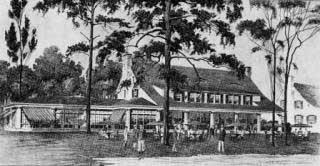
Increased industrialization in combination with a continued influx of job-seeking immigrants exacerbated urban problems and fueled the wealthy and middle-class's demand for suburban housing and rural retreats. It is in this overarching socio-economic context that Gibson Island (as well as other such Anne Arundel County resort communities as Sherwood Forest, Bay Ridge and Calvert County's North Beach and Chesapeake Beach) came into being.
Symington communicated frequently with the Olmsted Brothers, impressing upon them his ideas for the island. In one correspondence he relays his vision of "summer residences amid spacious, beautiful, restful surrounds, where refreshing breezes prevail, where the usual summer past times of the country are to be had, and at a distance from Baltimore, but not so great as to make it prohibitive for a business man to go back and forth daily when his affairs require daily attendance, and yet great enough to ensure that going out there will be going into the country and not merely moving to another part of the suburbs."
Initially Stuart Symington and his New York financier brother, Thomas, personally carried the financial burden of the project. To meet the expected $800,000 financial obligation the Club's target membership was placed at 1000 and divided into three classes; (a) house owners, (b) seasonal tenants of club cottages or club rooms, and (c) short-term non-residents. By 1922, Club membership was at 600 and current receipts were inadequate to meet the already accumulated $627,628 financial commitment. The Symington brothers responded by forming the Gibson Island Land Company and moved forward with development using bank loans. This marked the beginning of what became the Symington's continuing financial woes.
The Olmsted plan called for 423 residential lots and two eighteen-hole golf courses, but financial constraint affected the plans execution. The idea of a second golf course was abandoned, and against the Olmsted's strenuous objections, additional trees were cut to increase the number of premium water view lots. While the financial concern, the Gibson Island Land Company, continued to struggle, the social aspect, the Gibson Island Club, was the success its creators envisioned.
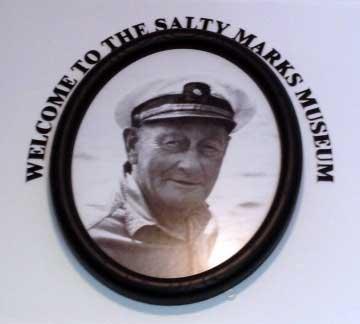
The Gibson Island Land Company undertook construction of the community Clubhouse, soon followed by the building of "summer cottages" by individual members. A large number of the Gibson Island Club's original members maintained a permanent residence in the Olmsted-designed, Baltimore neighborhood of Roland Park and a number of architects associated with Roland Park houses accepted commissions on Gibson Island, including Parker, Thomas & Rice; Edward Palmer, Jr.; and Palmer, Willis & Lamdin. Gibson Island architecture, as well as membership, has always been regulated. Promotional material from the 1920s states that plans for every house and other improvement must be approved by the Company's architectural committee, which is composed of leading architects.
The "cottage style" architecture of Gibson Island is representative of early 20th century taste. French Eclectic, Spanish Eclectic and Tudor Revival architecture were especially common in suburban communities during the period between the two World Wars. The popularity of these historically imprecise styles has been characterized by some a backlash against the then dominant Colonial Revival style, and also the result of a renewed interest in European-inspired architecture popularized by servicemen returning from abroad following World War I. With the approach of World War II these styles went out of favor as American taste began to reject foreign influences.
During the 1920s and 1930s, however buildings evocative of rural England, France, Italy, etc., were very much in vogue. A Gibson Island promotional package from the 1920s depicts a number of Gibson Island's oldest and finest homes that are representative of this genre.
Early advertisements and oral tradition emphasize the importance of family and organized activities and instruction for children were widely available. Golf, tennis and sailing were available for members, and instruction in these activities provided for their children. Golf may be the initial motivation behind the creation of the Gibson Island Club, but it is sailing for which it is renowned. Throughout its history, the Gibson Island Yacht Squadron has been the sponsor of nationally-recognized regattas, most notably the Gibson Island to New London race, and many prominent sailors started their career at Gibson Island. Members of the Gibson Island Garden Club for ladies also achieved national distinction.
As expected, the stock market crash of 1929 and the subsequent Great Depression adversely impacted members and significantly curtailed new construction. The Gibson Island project was also set back due to circumstances involving the Gibson Island project's principle backers, specifically the death of Stuart Symington and the bankruptcy of Thomas Symington. Economic hardship forced a number of families to relinquish their summer homes, and others including Thomas Symington, gave up their city homes and took up year-round residence on the Island. Hardship, like wealth proved relative, and despite financial retrenchment, sailing and golf tournaments continued. Gibson Island society life persevered through World War II, however charity drives, fund-raisers and bandage wrapping parties were as much a part of the summer social calendar as swimming and sailing.
In the post-war era Gibson Island began an earnest transformation away from a summer resort to a year-round community. Long-time resident, Jimmy Wolfe, revealed in an interview that Gibson Island culture began a subtle shift at this time. The number of out-of-state members decreased and somewhat diminished the Club's cosmopolitan reputation. In addition, during the early years members usually had business or personal associations with each other outside of Gibson Island, a situation that became less typical in the post-World War II era. The increased proportion of year-round residents precipitated renovations and expansions of what were once "summer cottages" as well as new construction. The increased number of year-round residents prompted the establishment of the Gibson Island Country School, an elementary school located on the mainland near the gate house, in 1956. The school (briefly renamed the Eagle Cove School) closed in 2014.
Since the Gibson Island Corporation and Gibson Island Club were inaugurated, significant changes have taken place in response to changing lifestyles. However, Stuart Symington's vision of a private, professional class community where members are able to enjoy a full variety of recreational activities, within close proximity of the city, remains fully intact.
The original Clubhouse was demolished in the fall of 2015, and a new facility built on the existing footprint. On September 3, 2016, the new Clubhouse was dedicated with a lavish party attended by Club members and their guests. The new Clubhouse features two stories of beautiful space with all dining venues taking full advantage of the spectacular views of the Chesapeake Bay. The Bay Side Bar is a popular spot for Friday night Happy Hour and the second floor Grill Room is a favorite for casual dining. Many Gibson Island families book the Rotunda for weddings and special events. Outside, the great porch across the back of the building and the dance terrace on the pool side are wonderful places to relax, watch the boats passing on the Bay and enjoy the cool evening breezes.
In 2018, the Cottages at Gibson Island were completely renovated, offering a variety of flexible room options for island guests. The Gibson House was also completely renovated and updated.
A great deal of information about the history of Gibson Island, the accomplishments of its members, and the history of the Yacht Squadron is in the collection at the Gibson Island Historical Society located in the Captain Salty Marks Museum on Gibson Island.
Artifacts found and information about our archaeological digs in various sites around the island are also found at the museum. Significant historical discoveries are being uncovered dating back to the 1700 and 1800's giving us further insight into our island's history. In the words of our lead archaeologist the NW quadrant on Gibson Island, "represents one of the most historically significant sites discovered in Anne Arundel County in the last three decades."


